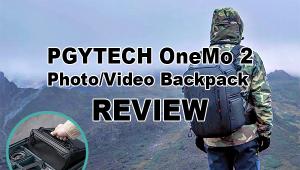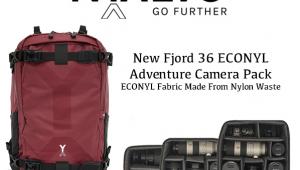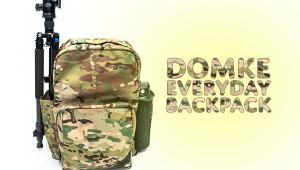Viato Photo Backpack by Kite Optics Review

By definition, backpacks are worn—on the back usually—although sometimes they’re just slung over one shoulder or carried by the haul handle. Right? Well, forget that thinking for a moment and let’s explore the Viato photo backpack from Belgian sport optics brand Kite Optics. You wear it, yes, but so does your tripod. Let me explain.
When you attach your camera and lens to the top of an open tripod you create a huge, triangular-shaped space that’s empty except maybe for the bottom of the center column or—rarely—a hanging sandbag stabilization weight. The perimeter of this empty space is defined by the three tripod legs.
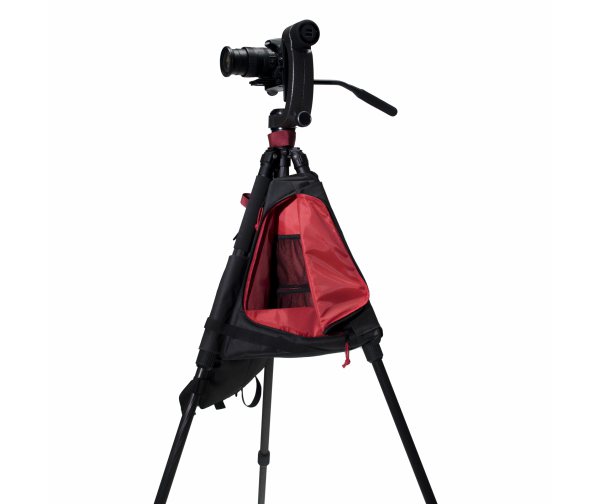
So what happens if you attach a similarly shaped container inside that space and secure it to the legs of the tripod? Add a couple straps and you have an innovative, ingenious backpack that can be used to store your gear and also to tote your tripod—with or without camera attached.
That’s what the Viato Photo Backpack from Kite Optics is all about. Its patented design makes use of the negative space that otherwise goes wasted. It’s quirky but clever, and falls into the “Why didn’t I think of that?” class of inventions.

How it Works
At first glance, the Viato looks more-or-less like a regular backpack. Look closer and you see that the back is poised like the closed wings of a butterfly, ready to open. Start by wrapping the open bag around the center column of your tripod, then pull it all the way to the top and secure it with the wide red strap. Extend the wings of the bag to reach the legs of the tripod and secure them with the super-strength Velcro. Close the equally super-strength Velcro front patch and lash the back panel in place on two of the legs using the supplied straps. Sounds more complicated than it is; it takes less than a minute to attach it and snug it up securely.
The capacity is not huge, but certainly large enough—15 liters if you’re keeping score. Frankly, if you’re adding the weight of a professional tripod to the weight of the loaded backpack, you don’t want or need large capacity.
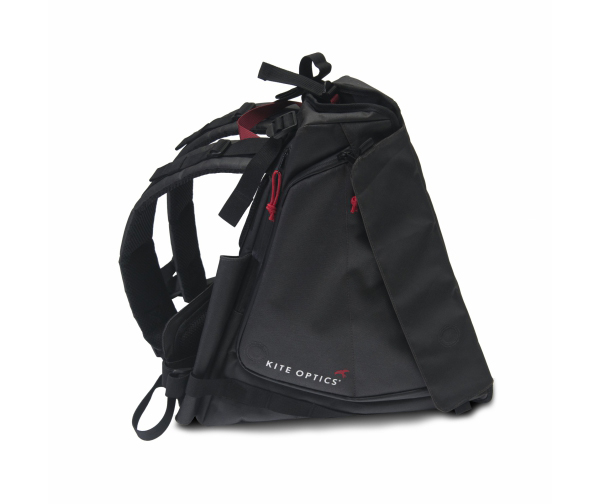
Can you use it as a conventional photo backpack, useful even if you don’t own or want to carry a tripod? Sure. That’s not its primary purpose, but neither is it problematical.
Construction
Viato is well made. I’d prefer to see YKK zippers but the stitching is adequate and the seams are sturdy and cleanly finished. There are two internal trapezoidal-shaped storage areas—one on each side—that taper as they reach the top of the bag. They are lined with a slick, red nylon instead of the customary plush or soft microfiber material. Exteriors appear to be waterproof and are made of a semi-shiny material as opposed to traditional matte black. The bottom has additional padding and is covered with a rubberized material that is exceptionally protective. A hidden zipper pouch contains the included weather cover, which is large enough to cover the whole kit when a camera and tripod are correctly assembled.
The shoulder straps are nicely padded and firmly connected, and there’s an air-flow pad on the back that provides comfort and ventilation. Sternum strap—in fact, all straps—are stout and securely attached.
The hook-and-eye fastener material, also known as Velcro, is about the strongest I’ve encountered. That’s partly because the strips are long and wide but primarily, I think, because the bag is designed to never come loose unintentionally. These are some serious fasteners!

Two Hidden Benefits
First, there’s never a need to set the Viato Photo Backpack on the ground where it could become wet or soiled. In some environments, that’s an important plus. Second, because the weight of the Viato bag is directly below the tripod head, it helps stabilize the whole setup. The backpack design and the laws of physics work together to make the Viato bag a very valuable accessory to use in a studio or any indoor setting, even if it’s never actually worn as a backpack.
And a Danger
For the record, I cringe when I see someone carrying a tripod with the legs together and a camera or camcorder on top, and the whole extended mess balanced on one shoulder. That maneuver places a tremendous amount of stress on the connection between the tripod head and camera bottom. Walking exacerbates the problem because the thing on top tends to bounce a bit—I think that’s Newton’s First Law (something about mass in motion staying in motion). So I hesitate to recommend carrying your camera and tripod this way, with or without a Viato Photo Backpack. That said, I still recommend the bag. Just remove the camera from the top of the tripod and place it inside the Viato bag. Bingo! Now you’ve got a very secure, comfortable way to tote both.
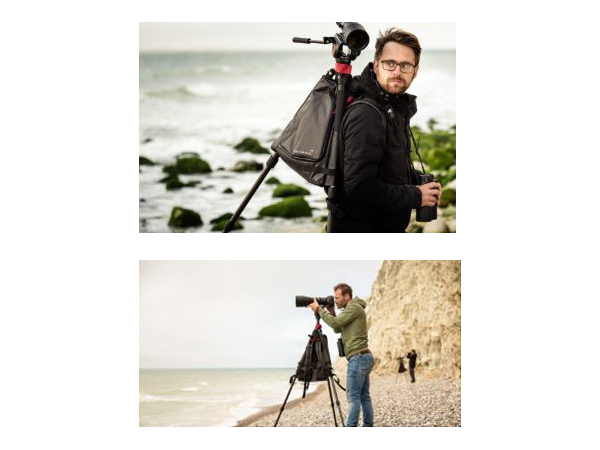
The Viato Photo Backpack from Kite Optics is distributed in the US by OmegaBrandess, a company that has a long and proud heritage in the camera industry. So if your local camera dealer doesn’t have the Viato yet, tell them how they how they can order it. Kite Optics is new to the US but widely known in Europe. They specialize in binoculars and spotting scopes and have a very interesting product called the Novagrade Smartphone Digiscope Adapter. Check it out.
Conclusion
I like the Viato Photo Backpack and heartily applaud its ingenuity. It’s a useful tripod accessory when deployed in the studio, and an innovative 15L backpack when used as intended outdoors. If you use a tripod frequently and often move from setup to setup, the Viato will save you all kinds of time. Even so, I also believe that it falls into that “Not everyone’s cup of tea” category because it’s optimized to be used in conjunction with a tripod as opposed to general applications. Also, it lacks a dedicated pouch for a tablet or notebook computer, two devices that many field photographers find indispensible.
Pricing and Availability
The Viato from Kite Optics is available at photo specialty dealers now (or soon) and has a retail price of $219.99. More info here.
—Jon Sienkiewicz




